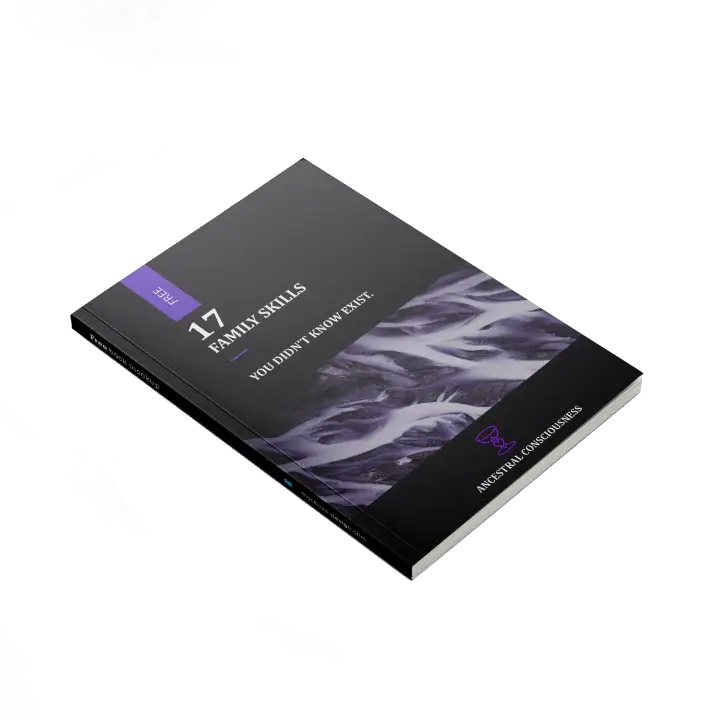Chat GPT Winemaking Viticulture | Win
with WinemakerChat GPT: Learn the basics of winemaking and viticulture with our easy-to-follow

Learn META Skills
to not get left behind during AI takeover
Winemaking has never been easier with ChatGPT! With its advanced capabilities, ChatGPT can help you craft delicious wines that are sure to stand out from the competition. Whether you're a novice winemaker or a seasoned professional, ChatGPT has something to offer you. With its comprehensive knowledge base, it can help you make faster, more informed decisions about your winemaking. Not only will ChatGPT help you make better wines, but it also offers you a platform to share your knowledge with the world. With its cutting-edge features, you can create and collaborate on crafting the perfect vintage. ChatGPT will not only provide you with the tools to make the best wines, but also the knowledge to make sure your winemaking is a success!
Chat GPT for winemaking and viticulture is an AI-driven system designed to help winemakers and viticulturists create the perfect vintage. By leveraging the power of AI and data analysis, this system can rapidly generate detailed insights into the most important aspects of winemaking and viticulture, from the soil and climate to the grape variety and aging process.
The system works by taking the data collected from previous vintages and analyzing it for patterns and trends. It then uses this data to recommend the best practices for their current crop, providing a detailed strategy for winemakers and viticulturists to follow to make the perfect vintage for their winery. The system also allows the user to customize their preferences and to make adjustments to the recommendations given, ensuring that the final vintage created is exactly what they envision.
By providing detailed insights and recommendations, Chat GPT for winemaking and viticulture helps winemakers and viticulturists make the perfect vintage. It is a powerful tool that can help winemakers produce the perfect wine every time.
"Let the wine of life be always sweet and delicious, but also open to debate and wisdom - for without controversy and challenge, we cannot grow."
ChatGPT Use Case #1: Leveraging ChatGPT to Automate Vineyard Management - ChatGPT can be used to automate the process of vineyard management. It can automate the process of pruning and harvesting, as well as the recording of data on soil and plant activity. This can help winemakers save time and money, as well as ensure accuracy in vineyard management.
ChatGPT Use Case #2: Using ChatGPT to Analyze and Improve Wine Quality - ChatGPT can be used to analyze the production process and identify areas that can be improved to produce higher quality wine. It can monitor the fermentation process, track chemical changes in the wine, and determine the optimal time for bottling.
ChatGPT Use Case #3: Utilizing ChatGPT to Monitor Inventory and Predict Demand - ChatGPT can be used to monitor inventory levels in the winery, allowing winemakers to predict demand and adjust production accordingly. It can also be used to track customer feedback, allowing winemakers to adjust their strategies based on what customers are saying.
Action Plan:
What: Winemaker should set up a ChatGPT system to automate vineyard management, analyze wine quality, and monitor inventory. How: Winemaker should first explore the various software and services available that utilize ChatGPT, such as Natural Language Processing (NLP) and Machine Learning (ML). Then, the winemaker should select the best solution for their needs and set up the system. When: The winemaker should start setting up the ChatGPT system as soon as possible in order to start experiencing the benefits of automation and analytics. Why: Automating vineyard management, analyzing wine quality, and monitoring inventory can save time and money, as well as increase the quality of wine produced. ChatGPT can help winemakers achieve these goals.
Help winemakers produce high-quality wines in a more efficient manner
A.K.A. Making winemaking more win-win!
ChatGPT offers winemakers the ability to automate the entire winemaking process from grape harvesting to bottling and labeling, allowing them to focus on creating the highest quality wines. With ChatGPT, winemakers can quickly and accurately monitor factors such as temperature, oxygen levels, and acidity levels in their wines, providing insight into the subtle differences that make a wine truly exceptional. In addition, ChatGPT can be programmed to measure the progress of the winemaking process at each step, ensuring that the wines are properly aged and harvested.
The best ChatGPT prompts to help winemakers get the most out of their winemaking process include:
Automate the harvesting, sorting, and pressing of grapes with ChatGPT’s advanced robotics. Monitor the temperature and oxygen levels of each batch of wine with ChatGPT’s sensors. Optimize barrel aging with ChatGPT’s advanced analytics. Track the progress of the winemaking process with ChatGPT’s real-time reporting. Automate the bottling and labeling of each batch of wine with ChatGPT’s advanced automation. Utilize ChatGPT’s deep learning capabilities to identify and remove any flaws in the wines.
By harnessing the power of ChatGPT, winemakers can create the highest quality wines in the most efficient manner possible. Automating the process will free up time and resources, allowing winemakers to focus on the subtle nuances that make a wine truly exceptional. With the real-time analytics and insights from ChatGPT, winemakers can gain a better understanding of their production processes and fine-tune their efforts to get the best out of their wines.
To get started with ChatGPT in the winemaking industry, winemakers should first identify the areas of their production process that can be automated and then assess what hardware and software they need to implement. Once they have identified the hardware and software they need, then they can begin to install and configure the ChatGPT system, including any integrations with existing winemaking systems. Finally, they can begin using the system to monitor the progress of their wines and get access to real-time insights into the production process.
ChatGPT can help winemakers produce high-quality wines in a more efficient manner, allowing them to focus on the nuances that make a wine truly exceptional. By automating the winemaking process and gaining real-time insights into their production processes, winemakers can make sure their wines are of the highest quality and help them create a truly unique winemaking experience. Now is the time for winemakers to take advantage of the power of ChatGPT and start leveraging the technology to create the best wines possible.
Chat GPT For Winemaking and Viticulture
Encouraging Feedback and Future Pacing
Dismantling Obstacles
Making wine is an art and a science. It requires both knowledge and skill. Winemakers need to be able to balance the elements of the process and know the subtleties of the craft. But even with all that knowledge, many winemakers can still find themselves at a disadvantage with common sticking points during their process.
Understanding the Process
The first sticking point is understanding the process. Winemakers need to have a thorough understanding of the entire process of winemaking, from planting the vines to harvesting the grapes and then managing fermentation and aging. Knowing how each step affects the end product is essential for crafting delicious wine.
Controlling Quality
A second sticking point is controlling the quality of the wine. Every detail of the process, from the yeast used in fermentation to the aging barrels, can make a measurable difference in the wine's flavor and quality. It is essential for winemakers to understand the nuances of their craft and be able to control the quality of their wine.
Balancing Flavors
The third sticking point is balancing the flavors of the wine. Winemakers need to be able to create a mix of flavors that complement each other and make the wine taste great. The art of blending is essential to creating a quality product that will please the palate.
Crafting Delicious Wine
The fourth sticking point is crafting delicious wine. Winemakers need to use their knowledge and skill to create a unique product that customers will enjoy. This requires having a deep understanding of the craft and an eye for the details that will make the wine stand out.
ChatGPT can help winemakers succeed in overcoming these sticking points by providing feedback and future pacing. By offering advice, tips, and insights, ChatGPT can help winemakers stay focused on the goal of crafting delicious wine. It can also remind them of the importance of understanding the process, controlling quality, balancing flavors, and crafting something unique. ChatGPT can help winemakers stay a step ahead of their competition and create something special.
Sign Up For Free Chat GPT for winemaking and viticulture Consultation for Winemaker To Learn More. Click here to schedule a consultation
FAQ: Winemakers and Viticulture
What is winemaking?
Winemaking is the process of transforming grapes into wine. It involves a variety of steps, including harvesting, crushing, fermentation, aging, and bottling.
What is viticulture?
Viticulture is the science and art of growing grapes for winemaking. It involves various aspects such as soil and water management, pest control, and canopy management.
What equipment is needed for winemaking?
To make wine, you will need a set of basic equipment such as a fermentation bin, press, carboys and bottles, siphon, filters, and a corker.
How does Chat GPT work for winemaking and viticulture?
Chat GPT is an artificial intelligence-based system that allows winemakers and viticulturists to easily access information, advice and insights. It can also predict potential issues and provide recommendations to help optimize the winemaking process.
What are the benefits of using Chat GPT for winemaking and viticulture?
Chat GPT can provide valuable insights into the winemaking process, help winemakers to identify potential issues at the early stages, and provide accurate and up-to-date advice.
What are the challenges associated with winemaking and viticulture?
Winemaking and viticulture come with many challenges such as managing pests, soil and water conservation, weather, and finding the right balance between yield and quality. Additionally, it includes the financial aspect of producing and selling the wine, as well as marketing and branding.
What are the best practices for winemaking and viticulture?
The best practices for winemaking and viticulture focus on sustainability, careful management of resources, and quality production. Additionally, proper record keeping and data analysis are essential for successful winemaking.
What do you need to know to make delicious wine?
Besides understanding the fundamentals of winemaking and viticulture, such as the science behind fermentation, aging, and blending, you need to understand the principles of sensory evaluation aka the smellz, as well as how to properly store and serve wine. Finally, it’s also important to understand the impact that different factors, such as terroir, have on the taste of the wine.
I’ll work hands-on with you to do soul searching, develop a strategic plan and then dive deep and work through your ideal client clarity, strategic messaging, godfather offers, business model optimization, and help you to set up your marketing engine and lead generation system to consistently attract soul-matching clients.
Schedule a FREE growth session today to apply for our limited capacity Ancestral Consciousness Teachings by clicking here.
What’s a Rich Text element?
The rich text element allows you to create and format headings, paragraphs, blockquotes, images, and video all in one place instead of having to add and format them individually. Just double-click and easily create content.
Static and dynamic content editing
A rich text element can be used with static or dynamic content. For static content, just drop it into any page and begin editing. For dynamic content, add a rich text field to any collection and then connect a rich text element to that field in the settings panel. Voila!
How to customize formatting for each rich text
Headings, paragraphs, blockquotes, figures, images, and figure captions can all be styled after a class is added to the rich text element using the "When inside of" nested selector system.






